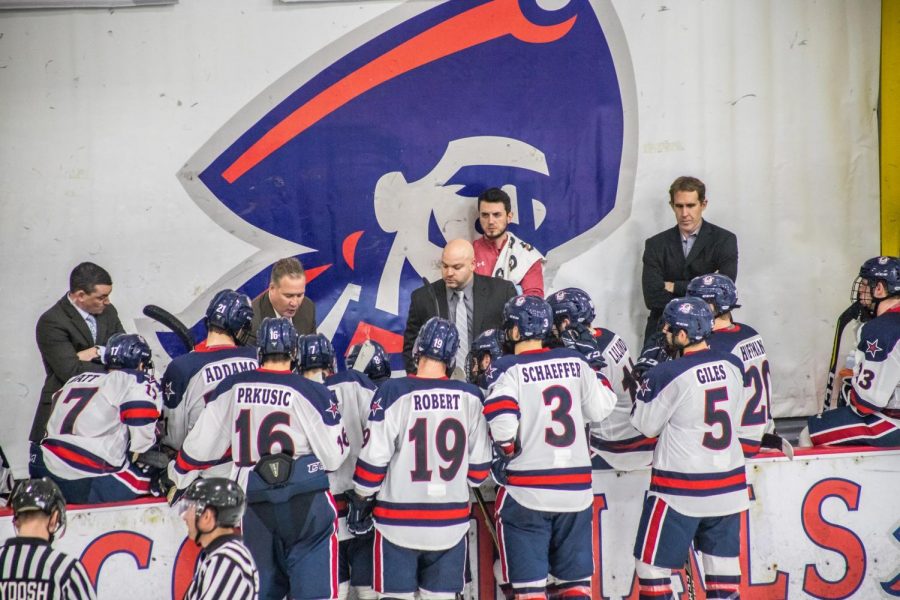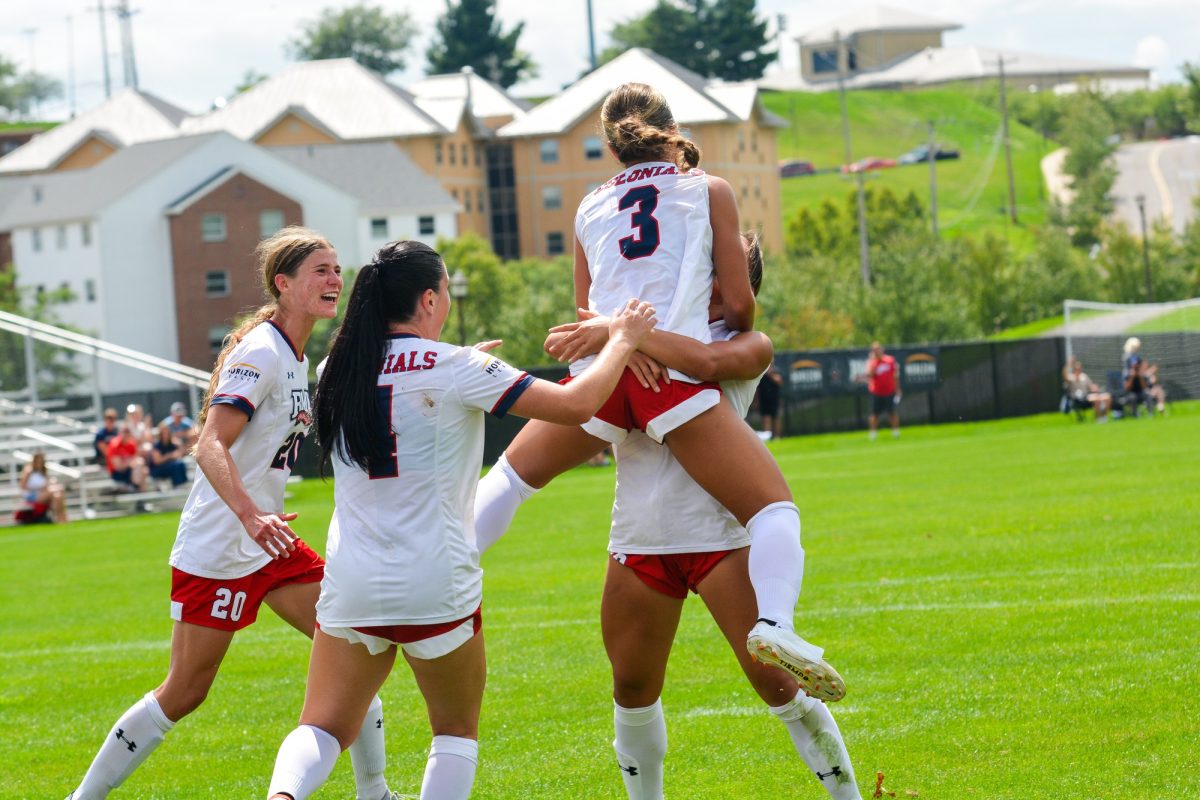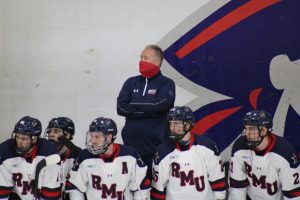OPINION: Frank Serratore unloads about AHA overtime rules and he’s right
The Robert Morris men’s hockey team discusses a play during a game against Niagara Nov. 2, 2018. (David Auth/RMU Sentry Media) Photo credit: David Auth
January 17, 2019
Editor’s Note: All opinions on RMU Sentry Media are the writer’s own.
MOON TOWNSHIP — Over the weekend Air Force (11-8-3, 9-5-2 AHA) took on Army (8-11-3, 7-6-3 AHA) in one of the best rivalries in the AHA, but what fans saw was nothing short of underwhelming. Both nights ended in a 2-2 tie during a night in which Cadet Ice Arena had their largest crowd of the season and Air Force’s head coach Frank Serratore was the first to point out that this is not what people come to the rink for.
“Our motto here? Fly, Fight, Win. It’s not Fly, Fight, Lose and it sure as heck ain’t Fly, Fight and Tie,” Serratore said to Grant Meech of the KOAA news station. “Those boys came in – both teams – and put on an entertaining show and didn’t disappoint anybody. Fixing overtime isn’t going to fix this but it’s a piece of the puzzle. We have to start creating ways and reasons for people to come to the rink, not reasons for them not to come to the rink.”
Serratore has a reason to be this upset with the outcome of the previous two games against Army. No one wants to watch any sporting event end in a tie, let alone college hockey, which is one the most exciting brands of hockey.
If the score is still tied after the conclusion of the third period, the current AHA’s overtime rules allow for one five-minute period. In this overtime period, minor penalties are three-minute power plays instead of two. As usual, if a goal is scored then that team wins and gets two points for the win while the other team receives only one point for the overtime loss. If neither team scores in the five minute period, the game ends in a tie. As far as playoffs go, it’s the same rules, but there is a shootout if neither team scores in the overtime period.
I, for one, hate this outline for overtime rules in hockey and sports in general. People don’t go to spend money on sporting events to see both teams not win. Nobody wins when two teams tie, figuratively and literally.
Serratore, speaking to Grant Meech of the KOAA news station, hit the nail in the head on this when he said, “If we aren’t in the entertainment business, why do we charge admission? Why do we pay coaches? Why do we all have marketing departments? It matters.”
This is especially bad for hockey. Hockey is not the most popular sport but it is one of the most entertaining sports to witness live and to watch on a broadcast. There’s a lot of hockey fans, but the sport has been trying to grow itself for a while now. Having games end in ties isn’t going to grow the sport.
The AHA should put in place a new set of overtime rules that consist of a 5-7 minute 4-on-4 or 3-on-3 overtime period. If you think that 5-7 minutes is too long and that even that won’t solve the problem, you haven’t watched enough hockey. In a 4-on-4 or 3-on-3 situation, there’s so much open ice for some very talented players to take advantage of. It comes down to someone making a mistake or fatigue, and after 60 minutes of college hockey, one of the two is bound to happen.
According to NCAA.com, this is possible after the NCAA approved that conferences could choose alternate formats to award points in their own respected standings after the five-on-five, five minute overtime period for men’s and women’s hockey alike. The options are after the five-minute five-on-five, period, a 3-on-3 five-minute period and then a shootout or just a shootout to decide games. The AHA chose to not implement either of those options and that’s where we stand now.
Not only will new overtime rules help fix the problem with people viewing hockey as a complex, semi-boring sport, but it’ll produce the most exciting brand of college hockey.









